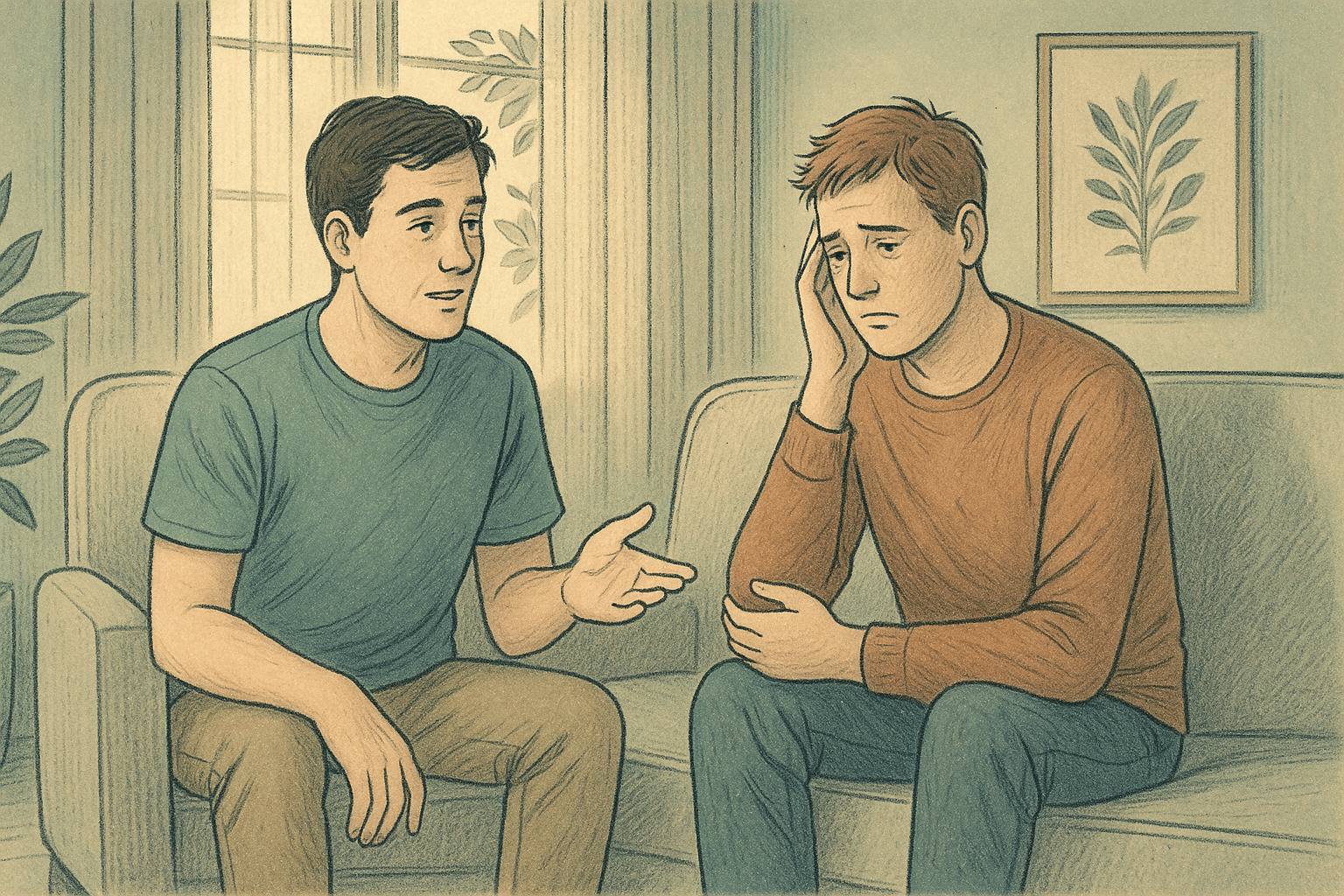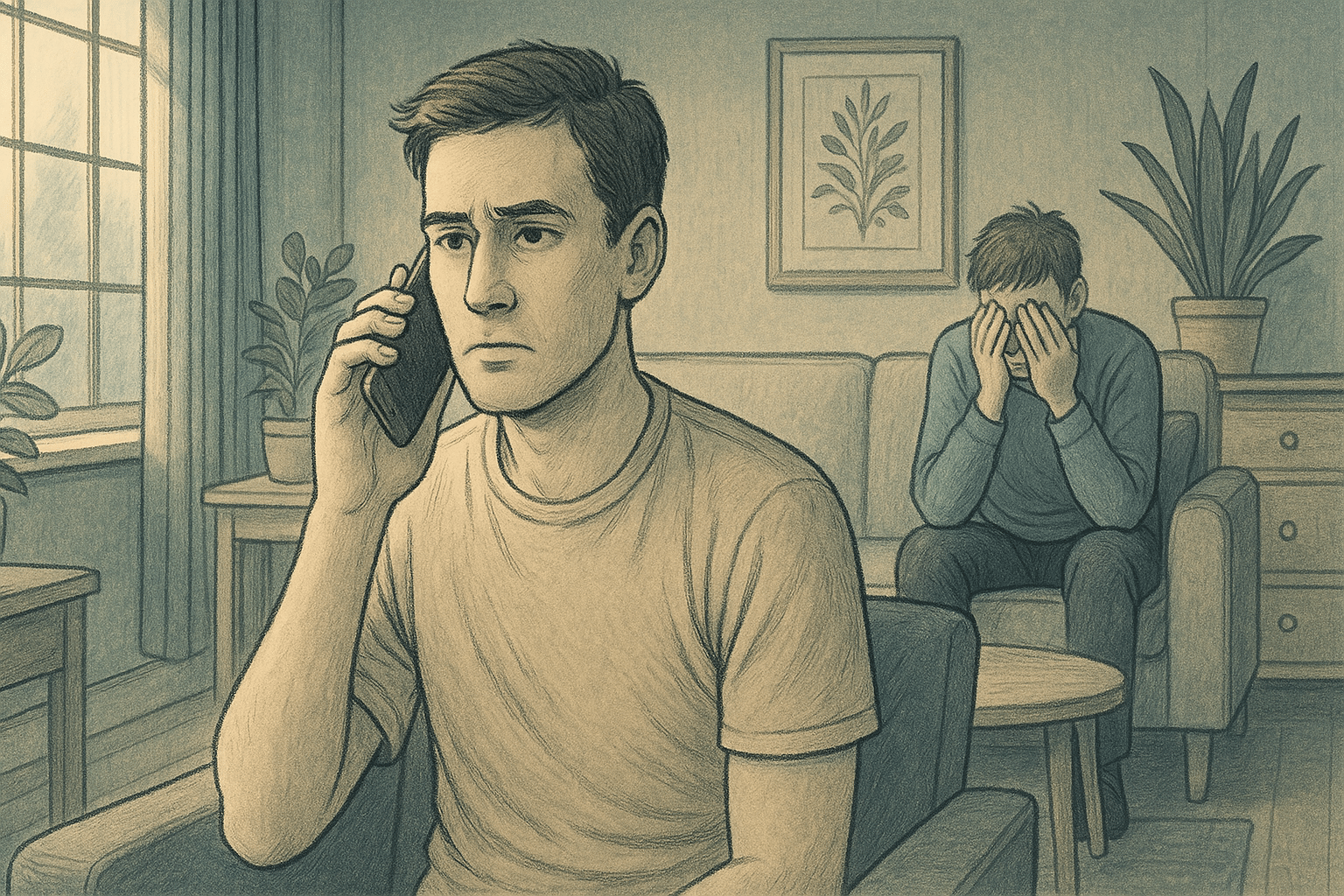Key Takeaways
- Building trust through consistent behavior and transparent communication is essential when interacting with someone who has Paranoid Personality Disorder (PPD).
- Clear, direct communication without ambiguity helps prevent misinterpretations that can trigger paranoid thoughts.
- Validating feelings without reinforcing delusions creates a supportive environment while maintaining reality.
- Setting and respecting boundaries protects both parties and creates a sense of safety in the relationship.
- At A Mission For Michael, we understand that supporting someone with PPD requires patience, specialized communication techniques, and professional guidance, which we provide through our comprehensive treatment programs that address both individual symptoms and relationship dynamics.
Paranoid Personality Disorder: Core Symptoms
Paranoid Personality Disorder (PPD) is characterized by a pervasive pattern of distrust and suspicion. Those with PPD often interpret others’ actions as deliberately threatening or demeaning, even when no evidence supports this perception. This isn’t an occasional suspicion that we all might experience, it’s a persistent worldview that affects nearly all relationships and social interactions.
Additionally, people with PPD often display extreme sensitivity to criticism or perceived slights. What might seem like an innocent comment or constructive feedback to you could be interpreted as an attack or evidence of your malicious intent. This hypersensitivity can make everyday interactions fraught with tension.
| A Mission For Michael: Expert Mental Health Care Founded in 2010, A Mission For Michael (AMFM) offers specialized mental health care across Southern California, Minnesota, and Virginia. Our accredited facilities provide residential and outpatient programs, utilizing evidence-based therapies such as CBT, DBT, and EMDR. Our dedicated team of licensed professionals ensures every client receives the best care possible, supported by accreditations from The Joint Commission and the California Department of Health Care Services. We are committed to safety and personalized treatment plans. Start your recovery journey with AMFM today! |
How to Gain the Trust of Someone with PPD

Before effective communication can take place with someone who has PPD, establishing a foundation of trust is essential. Trust doesn’t develop overnight with anyone, but with PPD, the process requires extra care and consistency.
Be Consistent
Consistency in your words, actions, and behavior provides predictability that helps reduce anxiety for someone with Paranoid Personality Disorder. When you say you’ll do something, follow through every time. If plans need to change, communicate this clearly and as early as possible. Avoid surprising the person with unexpected changes or behaviors that might feed into their suspicions.
Keep Promises
For someone with PPD, broken promises can be catastrophic to trust. Even minor lapses might be perceived as evidence confirming their suspicions about your untrustworthiness. When you make a commitment, ensure you can fulfill it. If circumstances prevent you from keeping your word, acknowledge this directly, apologize sincerely, and explain the situation without making excuses.
Respect Boundaries
People with PPD often have strong boundaries as a protective mechanism. Respecting these boundaries, even when they seem excessive to you, demonstrates that you acknowledge their comfort level and are not trying to push them into uncomfortable territory. Over time, as trust builds, some boundaries may relax naturally, but forcing this process will likely backfire.
Taking time to understand their specific concerns and triggers allows you to manage interactions more successfully.
Effective Ways to Communicate with PPD Patients
Speak Clearly
Clear, straightforward communication is essential when interacting with someone with PPD. State your intentions directly and avoid using metaphors, sarcasm, or jokes that could be misinterpreted. Be specific about what you mean rather than assuming the person will “read between the lines.” This clarity helps prevent the person from filling in gaps with their own fears or suspicions.
Avoid Ambiguity
Ambiguous messages or vague statements can be fertile ground for paranoid interpretations. When speaking with someone who has PPD, be precise about your meaning and intentions. For example, instead of saying “Let’s talk later,” which might trigger anxiety about what you want to discuss, try “I’d like to talk about dinner plans around 5 PM today.”
Similarly, avoid making statements that could be interpreted in multiple ways. The clearer and more concrete your communication, the less opportunity there is for misunderstanding.
Stay Calm
Maintaining a calm, even tone helps prevent escalation during difficult conversations. If you become defensive or emotional, the person with PPD may perceive this as confirmation of their suspicions. Practice remaining composed, especially when addressing sensitive topics or responding to accusations.

Deep breathing and grounding techniques can help you maintain your composure in challenging moments. Your calm demeanor can help model emotional regulation for the other person as well.
Don’t Whisper
Whispering, speaking quietly to others, or having conversations out of earshot can trigger paranoia for someone with PPD. These actions might be interpreted as you talking about them or plotting something. When possible, conduct conversations at a normal volume where the person can hear you if they’re present.
If you need to have a private conversation with someone else, it’s better to explain this directly rather than appearing secretive. For example, “I need to make a quick call to my doctor about my test results. I’ll be in the other room for about 10 minutes.”
Managing Accusations
One of the most challenging aspects of interacting with someone who has PPD is responding to accusations or suspicions directed at you. How you respond in these moments can either escalate the situation or help restore a sense of safety and trust.
Don’t Argue
Arguing with paranoid beliefs or directly challenging accusations rarely leads to positive outcomes. Instead of becoming defensive or trying to prove the person wrong, acknowledge that their feelings and perceptions are real to them, even if you don’t share their interpretation of events. Responding with, “I understand this feels real to you, and I’m sorry you’re feeling this way” validates their emotional experience without reinforcing the paranoid belief.
Validate Feelings
While you shouldn’t reinforce paranoid beliefs, validating emotions is crucial. Someone with PPD experiences genuine distress, fear, and anxiety. Acknowledging these feelings without judgment can help the person feel heard and understood. Try statements like, “I can see you’re feeling anxious about this situation” or “It makes sense that you’d feel concerned when you thought that was happening.”
Redirect Focus
When conversations become dominated by paranoid thoughts, gently redirecting to other topics can be helpful. Rather than directly changing the subject, which might seem dismissive, try acknowledging their concern first and then suggesting a shift: “I understand you’re worried about that. While we think about it, would you like to join me for a walk? The fresh air might help us both.”
Finding activities that engage the person’s attention can sometimes provide relief from the intensity of paranoid thoughts. Meaningful distractions like shared hobbies, physical activities, or practical tasks can temporarily reduce rumination.
How to Manage PPD Crises
Warning Signs
Learn to identify when paranoia is intensifying. This might include increased agitation, more frequent accusations, sleep disturbances, isolation, or refusing to eat due to contamination fears. Physical signs like pacing, trembling, or speaking more rapidly can also indicate escalating distress.
Pay attention to changes in the content of paranoid thoughts as well. If beliefs become more extreme or begin to involve immediate threats, this may signal a worsening situation that requires intervention.
De-escalation Steps
When you notice escalation, remain calm and speak in a soft, reassuring voice. Reduce environmental stimulation by turning down lights or music and creating a quiet space. Avoid sudden movements or touching the person without permission, as this might be perceived as threatening.
Rather than challenging beliefs directly, focus on immediate needs and comfort. Simple statements like “You’re safe right now” or “I’m here with you” can provide grounding. Sometimes, suggesting a basic self-care activity like having a glass of water or taking some deep breaths together can help interrupt escalating anxiety.
Seeking Help

Know when professional intervention is needed.
If the person expresses thoughts of harming themselves or others, if they become unable to care for their basic needs, or if they lose touch with reality completely, emergency services may be necessary. Keep contact information for their mental health providers, local crisis services, and emergency numbers readily available.
If possible, discuss crisis planning during calmer periods. Having a predetermined plan that the person has contributed to can make difficult situations easier to manage and may feel less threatening than interventions imposed without their input.
Supporting Treatment for PPD
Professional treatment is typically necessary for managing PPD effectively. While you can’t force someone to seek help, there are ways to encourage and support their treatment journey.
Encourage Help
Approach the topic of professional help with sensitivity, focusing on specific symptoms or challenges rather than labels or diagnoses. For example, “I’ve noticed you’ve been feeling really anxious lately. Talking to someone who specializes in anxiety management might give you some new strategies.”
Don’t Force
Pressuring someone with PPD to seek treatment often backfires, reinforcing their suspicions about others trying to control them. Unless there’s an immediate safety risk, respect their autonomy in making healthcare decisions. Instead of insisting on treatment, continue providing information about resources and expressing your support for whatever steps they’re ready to take.
Learn About Therapy
Educate yourself about treatment approaches for PPD so you can discuss them knowledgeably. Cognitive Behavioral Therapy, psychoeducation, and in some cases medication can be helpful components of treatment. Understanding these approaches allows you to have more informed conversations and address misconceptions.
Expert Paranoid Personality Disorder Communication Support at AMFM

Our comprehensive treatment programs at A Mission For Michael provide essential support and education for individuals, their family members, and loved ones.
At AMFM, we understand the complex patterns involved in supporting someone with PPD and the significant impact it has on families and relationships. Through specialized therapy approaches, medication management when appropriate, and family counseling, we help create healthier communication patterns and more stable relationships.
Our experienced clinical teams across California, Virginia, and Washington recognize that effective treatment for PPD requires long-term commitment, consistency, and specialized interventions. We provide the expert guidance needed to manage challenging behaviors while maintaining safety and promoting healing.
If you’re seeking treatment for yourself or supporting a loved one with PPD, our compassionate, evidence-based approach offers hope for improved relationships and enhanced quality of life for everyone affected by this challenging condition.
Frequently Asked Questions (FAQs)
Can someone with PPD maintain relationships?
Yes, people with PPD can and do maintain relationships, though these connections often face unique challenges. With appropriate treatment, understanding from loved ones, and effective communication strategies, many people with PPD develop meaningful relationships despite their struggles with trust.
How do I respond to paranoid accusations?
When faced with paranoid accusations, remain calm and avoid becoming defensive or dismissive. Acknowledge the person’s feelings without validating inaccurate beliefs: “I understand you feel threatened right now, though I don’t have the same perspective on what happened.”
Should I challenge irrational beliefs?
Direct challenges to paranoid beliefs rarely lead to positive outcomes and may damage trust. Instead of confronting irrational beliefs head-on, focus on building trust through consistent, transparent behavior that contradicts paranoid expectations over time.
Can PPD be completely cured?
Personality disorders, including PPD, are typically considered long-term conditions that can be managed rather than completely cured. However, with appropriate treatment, many people experience significant improvement in their symptoms and quality of life.
How does AMFM help families and individuals affected by Paranoid Personality Disorder?
AMFM provides comprehensive treatment programs that address both individual symptoms and family dynamics affected by PPD. Our approach includes specialized therapy techniques, medication management when appropriate, and family education about effective communication strategies.
Our experienced clinicians understand the unique challenges of PPD and provide the patience, consistency, and specialized care needed for successful treatment outcomes.










